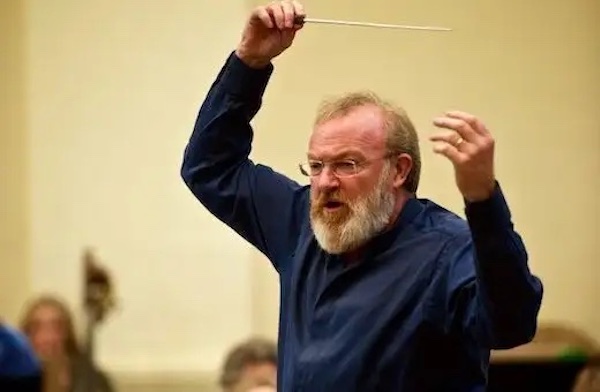Classical Album Review: Charles Villiers Stanford’s “Requiem”
By Jonathan Blumhofer
This new recording of Charles Villiers Stanford’s Requiem by Martyn Brabbins, the City of Birmingham Symphony Orchestra (CBSO), and the University of Birmingham Voices, is beautiful and often memorable.
 What might Brahms’s Ein deutsches Requiem have sounded like if, rather than having grown up in the bosom of the Fatherland, the German master’s mother’s-milk had instead been that of the Anglican choral tradition? Something akin to Charles Villiers Stanford’s Requiem, perhaps?
What might Brahms’s Ein deutsches Requiem have sounded like if, rather than having grown up in the bosom of the Fatherland, the German master’s mother’s-milk had instead been that of the Anglican choral tradition? Something akin to Charles Villiers Stanford’s Requiem, perhaps?
Actually, that’s not entirely fair. Stanford’s 1896 opus is no rehash of the earlier, better-known score. It boasts a distinctive structure, a singular point of view, and its own way of handling voices and instruments.
But in tone it’s not that far removed from the Brahms. Rather than tackling the terrors of the Last Judgment or the licking flames of hell as Berlioz and Verdi (and Mozart) so memorably did, Stanford’s effort aims to provide a measure of solace and comfort. In this, his setting of the Roman liturgy foreshadows Fauré’s and Duruflé’s more than a bit.
This particular attitude is evident from the very opening, whose hushed instrumental textures and floating choral progressions emerge in the best British tradition in this new recording of the Requiem by Martyn Brabbins, the City of Birmingham Symphony Orchestra (CBSO), and the University of Birmingham Voices. Yes, there will be stormy moments — especially in the straightforward (and slightly subdued) “Dies irae” — but, for the most part, warmth, devotion, and ethereality are on tap.
The results are beautiful and often memorable. Brabbins knows this piece inside out, even as a few moments (like the “Lacrimosa”) feel like they’re pushed a bit harder than necessary. No matter: even in that chromatic section, the ensemble’s blend is ever warm and fervent. Besides, the natural flow of Stanford’s writing — he had a keen sense of structure even if he wasn’t always crafting earworms — emerges naturally in this performance, which was taped last summer at Birmingham’s Symphony Hall.
That’s much the story with the “Dies irae” as well as in the “Sanctus,” whose beguilingly delicate Wagnerian textures don’t distract from the music’s overriding sense of sweep, color, and atmosphere. For sheer vigor, it’s hard to beat the limber “Quam olim Abrahae” fugue in the “Offertorium,” which is simply thrilling.

Martyn Brabbins conducting Requiem. Photo: Hyperion, S Perry
True, the orchestra sometimes sounds a shade rhythmically hesitant and the quartet of soloists (soprano Carolyn Sampson, mezzo-soprano Marta Fontanals-Simmons, tenor James Wray, and baritone Ross Ramgobin) don’t always blend easily with the choir. Also, balances between instruments and voices are periodically off.
Yet the whole undertaking exceeds the sum of its parts. The choral contributions are nearly flawless. David Kettle’s liner notes are deeply informative. All hands involved clearly believe in the piece. That’s exactly the approach Stanford and his Requiem demand. Let’s hope the recording can do much to help bring this deserving music back into the repertoire.
Jonathan Blumhofer is a composer and violist who has been active in the greater Boston area since 2004. His music has received numerous awards and been performed by various ensembles, including the American Composers Orchestra, Kiev Philharmonic, Camerata Chicago, Xanthos Ensemble, and Juventas New Music Group. Since receiving his doctorate from Boston University in 2010, Jon has taught at Clark University, Worcester Polytechnic Institute, and online for the University of Phoenix, in addition to writing music criticism for the Worcester Telegram & Gazette.

Many thanks for this article, by an author whose output I hadn’t encountered before.
In case of interest, a recent doctoral dissertation which deals with Stanford’s organ compositions has now been made available to the general public via the library catalog of the institution where the doctorate was awarded.
https://ses.library.usyd.edu.au/handle/2123/26156
And Britain’s Stanford Society now exists to make the composer’s works better known:
https://www.thestanfordsociety.org/